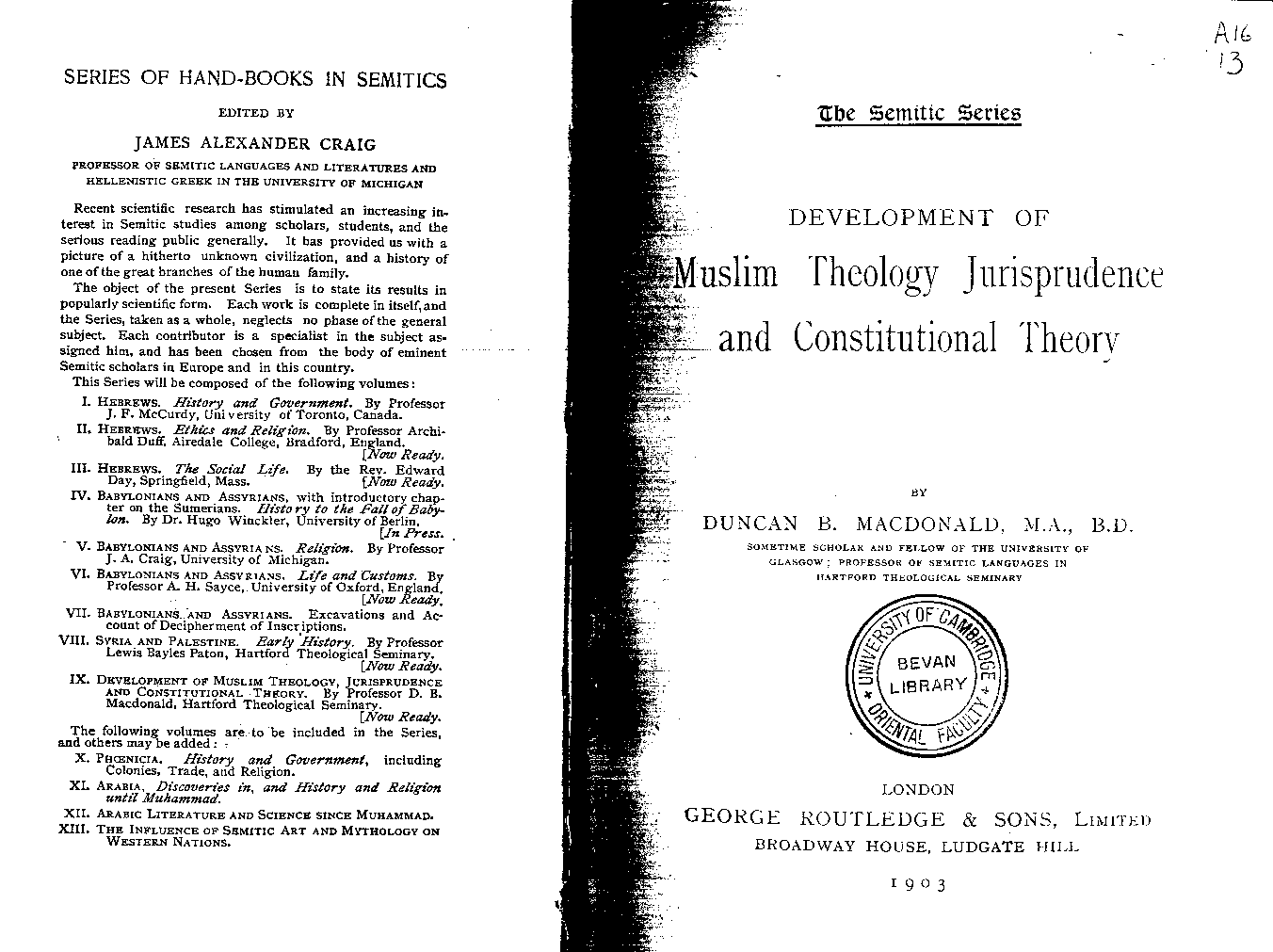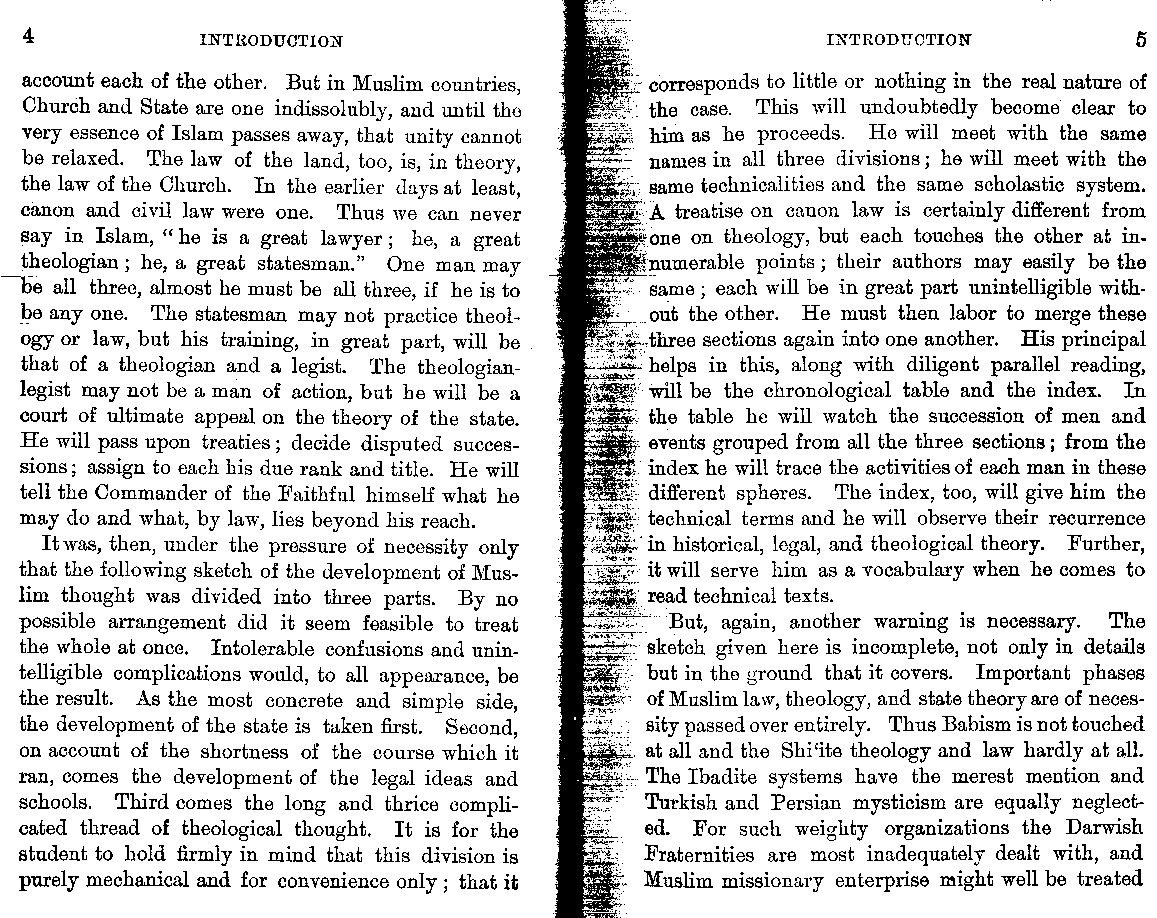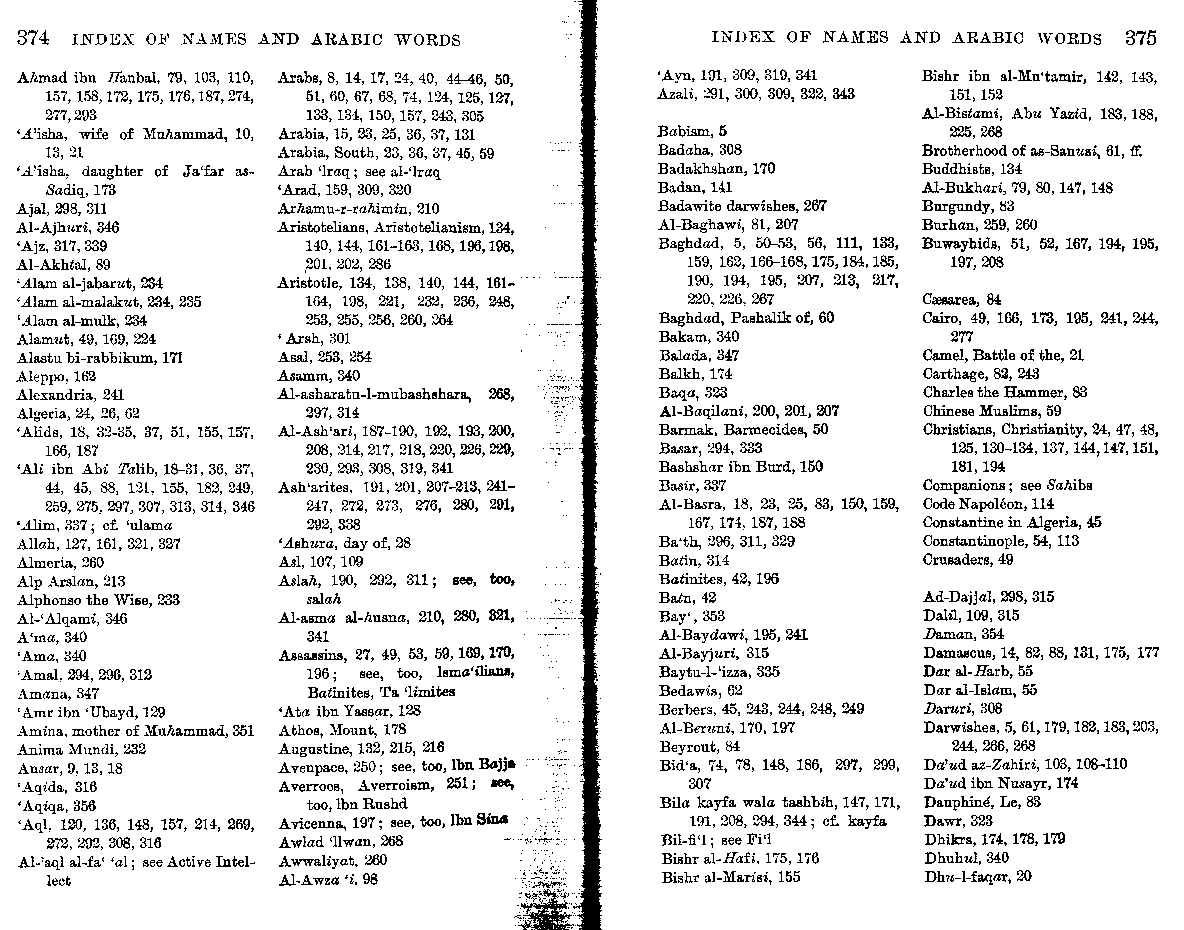1. Text
[p. 4]
... in Muslim countries, Church and State
are one indissolubly, and until the very essence of Islam passes away, that
unity cannot be relaxed. The law of the land, too, is, in theory, the law of
the Church. In the earlier days at least, canon and civil law were one. Thus we
can never say in Islam, "he is a great lawyer; he, a great theologian; he, a
great statesman." One man may be all three, almost he must be all three, if he
is to be any one. The statesman may not practice theology or law, but his
training, in great part, will be that of a theologian and a legist. The
theologian-legist may not be a man of action, but he will be a court of
ultimate appeal on the theory of the state. He will pass upon treaties; decide
disputed. successions; assign to each his due rank and title. He will tell the
Commander of the Faithful himself what he may do and what, by law, lies beyond
his reach.
It was, then, under the pressure of necessity only that the following sketch of
the development of Muslim thought was divided into three parts. By no possible
arrangement did it seem feasible to treat the whole at once. Intolerable
confusions and unintelligible complications would, to all appearance, be the
result. As the most concrete and simple side, the development of the state is
taken first. Second, on account of the shortness of the course which it ran,
comes the development of the legal ideas and schools. Third comes the long and
thrice complicated thread of theological thought. It is for the student to
hold. firmly in mind that this division is purely mechanical and for
convenience only; that it
[p. 5]
corresponds to little or nothing in the real
nature of the case. This will undoubtedly become clear to him as he proceeds.
He will meet with the same names in all three divisions; he will meet with the
same technicalities and the same scholastic system. A treatise on canon law is
certainly different from one on theology, but each touches the other at
innumerable points; their authors may easily be the same; each will be in great
part unintelligible without the other. He must then labor to merge these three
sections again into one another. His principal helps in this, along with
diligent parallel reading, "will be the chronological table and the index. In
the table he will watch the succession of men and events grouped from all the
three sections; from the index he will trace the activities of each man in
these different spheres. The index too, will give him the technical terms and
he will observe their recurrence in historical, legal, and theological theory.
Further, it will serve him as a vocabulary when he comes to read technical
texts.
But, again, another warning is necessary. The sketch given here is incomplete,
not only in details but in the ground that it covers. Important phases of
Muslim law, theology, and state theory are of necessity passed over entirely.
Thus Babism is not touched at all and the Shi'ite theology and law hardly at
all. The Ibadite systems have the merest mention and Turkish and Persian
mysticism are equally neglected. For such weighty organizations the Darwish
fraternities are most inadequately dealt with, and Muslim missionary enterprise
might well be treated ...
2. Image scans (click image for full-size version)




|
